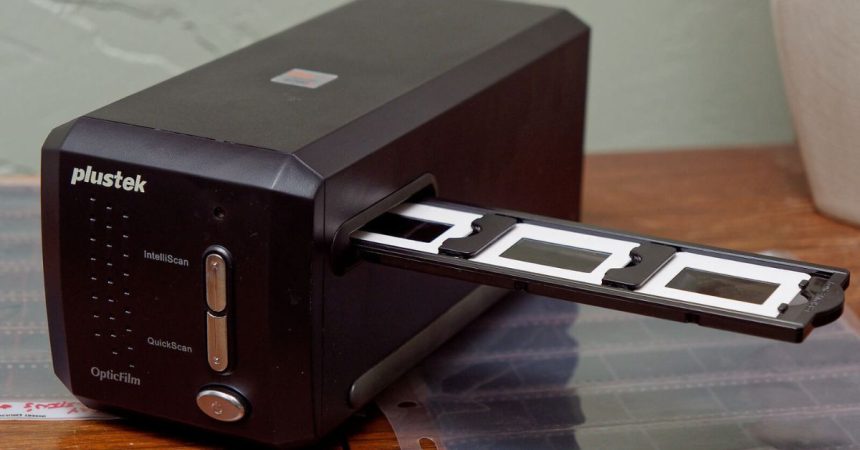Introduction
Scanning half-frame negatives can be a unique challenge, but it’s an incredibly rewarding way to bring your film memories to digital life. A half-frame camera shoots two images on what would normally be a single frame of a 35mm film, effectively doubling the number of exposures per roll. This can save money and offer a distinctive photographic style. However, scanning half frames requires a slightly different approach to ensure the best quality.
The Plustek 8200i is popular among photographers for its dedicated film scanning capabilities, offering high resolution and excellent dust and scratch removal features. In this guide, we’ll walk through the best practices for scanning half-frame film using the Plustek 8200i, from setting up your workspace to optimizing your software settings.
Step-by-Step Guide: How to Scan Half Frames in Plustek 8200i
Setting Up Your Workspace
Scanning film requires a clean and dust-free workspace. Here’s how you can prepare:
- Clean the Work Area: Use a microfiber cloth to wipe down surfaces where you’ll handle the film. Dust can easily get trapped in the film, affecting the scan quality.
- Gather Tools: Prepare an air blower, cotton gloves (to prevent fingerprints), and a soft brush to light dust the film.
- Check Scanner Cleanliness: Ensure that your Plustek 8200i’s glass and film holder are dust-free. Use a blower to remove any particles.
Loading Half-Frame Film in the Plustek 8200i
Loading half-frame film properly is critical for accurate scanning:
- Positioning the Film: Place the half-frame film in the holder, ensuring it’s snug and flat. The film should align with the holder’s guides to avoid tilt or misalignment.
- Alignment Tips: Since half-frame images are smaller than a standard 35mm frame, carefully center each image. Some users find using a small tape to keep the film in place can help if the film shifts during the scan.
Choosing the Right Scanning Software
Your choice of software impacts the scanning quality. For the Plustek 8200i, these are the top options:
- SilverFast: The most recommended software due to its powerful features tailored for film scanning. SilverFast SE and Ai Studio versions are popular, offering multi-exposure and automatic dust removal.
- VueScan: A versatile, user-friendly alternative that supports a wide range of scanners. It’s less expensive but still offers good quality for half-frame scans.
- Plustek QuickScan: The software provided by Plustek is simpler and good for beginners but lacks advanced features.
Optimizing Software Settings for Half-Frame Film
To get the best results, fine-tune the software settings for the half-frame film:
- Resolution Settings: Use at least 3600 dpi to capture the details of half-frame images. Higher resolution ensures more detail, especially if you plan to print or crop the images later.
- Color Depth: Set the color depth to 16-bit for a greater range of colors and tones. This is particularly important for preserving subtle details in highlights and shadows.
- Brightness & Contrast Adjustments: Experiment with manual adjustments or use the software’s automatic settings. Start with low contrast and adjust based on the preview.
- Sharpening: Apply minimal sharpening during scanning. Excessive sharpening can create artifacts; you can increase sharpness later in post-processing.
Troubleshooting Common Issues with Half-Frame Scans
Even with the right setup, issues may arise. Here’s how to address common problems:
Dealing with Alignment Problems
- Manual Crop Adjustments: Switch to manual cropping if the software auto-crops the half-frame incorrectly. Most software allows you to drag guides around the specific frame.
- Use the Software’s Multi-Frame Option: Some software can split scans into multiple frames, which is useful for a half-frame.
Addressing Dust and Scratches
- Infrared Dust Removal: If using color negatives, ensure the infrared dust removal option is enabled. Due to its silver content, it won’t work with black and white film.
- Cleaning Before Scanning: Use a blower to remove dust and ensure the film is as clean as possible.
Managing Color Balance and Exposure
- Color Correction Tools: Use SilverFast’s NegaFix or similar tools for color correction. These tools help in achieving accurate colors by applying film-specific profiles.
- Exposure Adjustments: Check the histogram in the preview window and adjust exposure to ensure details are not lost in shadows or highlights.
Enhancing Scans: Tips for Post-Processing
After scanning, post-processing can refine and perfect your half-frame images.
Basic Post-Processing Tips
- Use Non-Destructive Editing: Software like Adobe Lightroom or Capture One allows non-destructive edits, so you can always return to the original file.
- Adjusting Colors: Use color correction tools to balance the image, especially if the scan looks too cool or warm.
- Sharpening and Noise Reduction: Apply sharpening carefully. Too much can cause unwanted noise. Noise reduction tools can help reduce grain if it appears too harsh.
Advanced Techniques for Half-Frame Film
- Merging Half-Frame Scans: You can merge two half-frame images into one panoramic shot using software like Photoshop for creative projects. Align the images carefully to avoid any visible seams.
- Cropping and Straightening: Ensure the final image is properly cropped and straightened, especially if any misalignment occurs during the scan.
Comparing Scanning Quality: Plustek 8200i vs. Other Scanners
The Plustek 8200i is a standout scanner, but how does it compare to alternatives?
Advantages of the Plustek 8200i for Half-Frame Scanning
- High Resolution: Capable of scanning up to 7200dpi, which captures the tiny details of half-frame images.
- Dust and Scratch Removal: The infrared feature works well for color films, minimizing manual touch-ups.
- Ease of Use: The film holders are designed to keep negatives secure, reducing the need for manual adjustments.
Limitations to Consider
- Black and White Infrared Compatibility: The infrared dust removal doesn’t work with traditional black and white films.
- Speed: Scanning at high resolutions can be time-consuming, especially with the manual adjustments often needed for the half-frame film.
Frequently Asked Questions (FAQs)
How do I properly load half-frame film in the Plustek 8200i?
To load half-frame film, ensure each image is positioned centrally in the holder. Adjust the holder’s guides to stabilize the film, preventing shifts during the scan. It’s best to use a holder that’s clean and free of dust to avoid any unwanted particles affecting your scans.
What are the best software settings for scanning half-frame film?
For optimal quality, set the resolution to at least 3600 dpi and choose a 16-bit color depth for accurate color reproduction. Adjust the contrast and brightness to suit the film type, and apply light sharpening during scanning to preserve details.
Can I use SilverFast software for half-frame film scans on the Plustek 8200i?
Yes, SilverFast is highly recommended for half-frame scanning with the Plustek 8200i. Use its advanced features like infrared dust removal and multi-exposure to enhance dynamic range and minimize post-processing.
Conclusion
Scanning half-frame film with the Plustek 8200i requires patience and attention to detail, but the results are worth it. This guide covers everything from setup to troubleshooting and post-processing, ensuring you get the most out of your scans. Experiment with different settings, find what works best for your film type, and enjoy the digital transformation of your half-frame photography!





